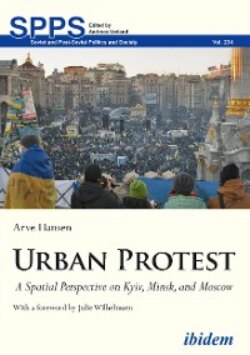Читать книгу Urban Protest - Arve Hansen - Страница 12
2.1.1 Form
ОглавлениеOne form of urban contention is the violent mob, wholly or partially controlled by powerful individuals such as politicians, religious leaders, and oligarchs. The mob has often been used as a tool to incite violence in cities against political opponents and so change the political landscape. In the Ancient Roman Republic, for example, groups of discontented plebeians often became an important force in the frequent (and often violent) transitions of power (Brunt 1966). Another example might be the veche (popular assembly) of the Medieval East Slavic Novgorod Republic (1136–1478), where the crowd were often more powerful than their prince. Historical chronicles recount how the Novgorodians, under heavy influence from wealthy boyars, sometimes removed ineffective leaders by force (Paul 2008; Evtuhov, Goldfrank, Hughes, and Stites 2004, 88–89).
Urban contention can also be seen in the uncontrolled violent crowd which, under pressure, stands up to the ruling elites and overthrows them in violent riots, uprisings, and revolutions. The French Revolution (1789–1799) is a particularly prominent example because it shows how space can both foster discontent and provide a suitable environment for insurgencies.2
Conversely, urban discontent can manifest as nonviolent protests, such as the 1913 Women’s Suffrage Parade on Pennsylvania Avenue in Washington, D.C. (Lumsden 2000), or the 1919 May Fourth Movement at Tiananmen Square in Beijing (Wasserstrom 2005).
